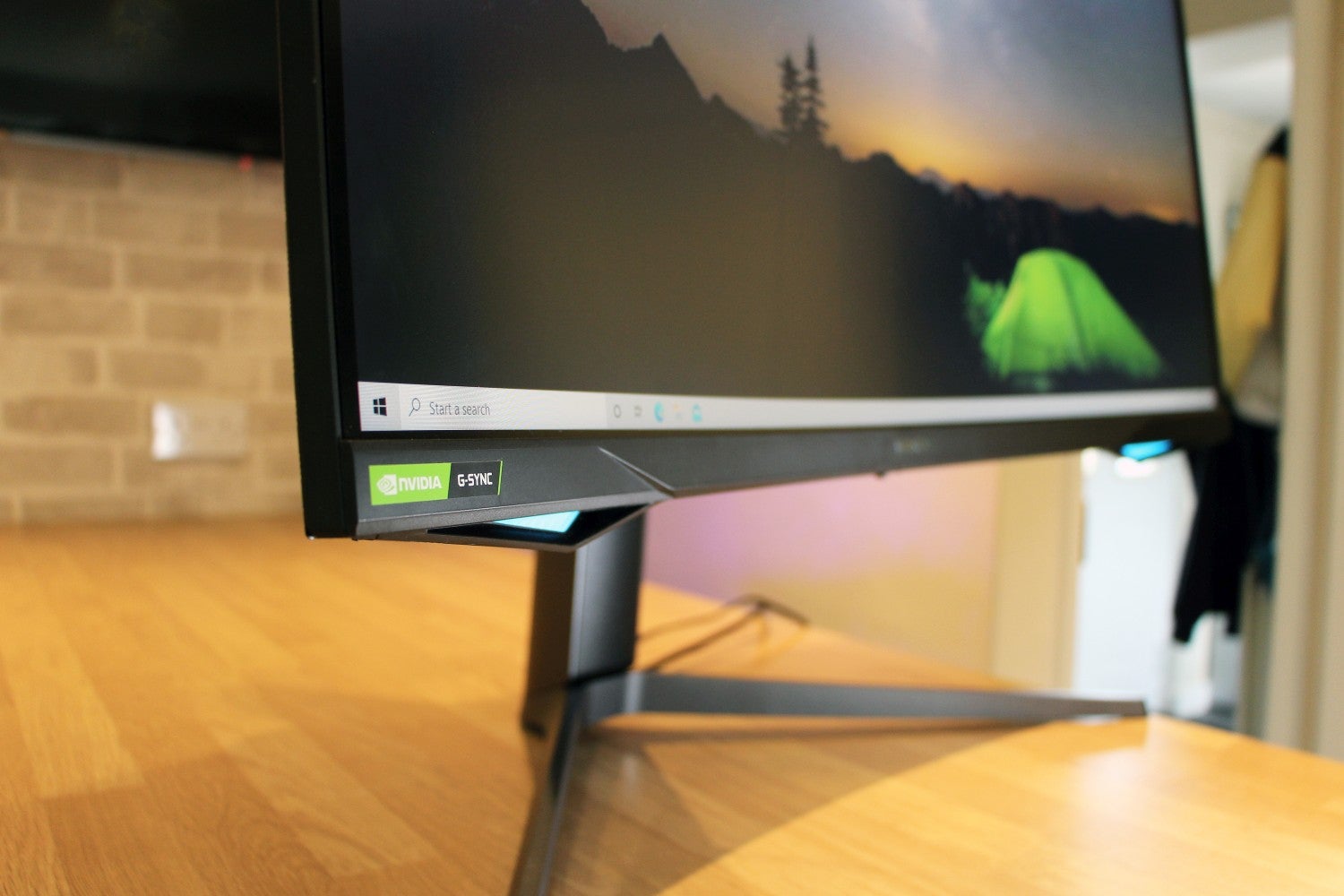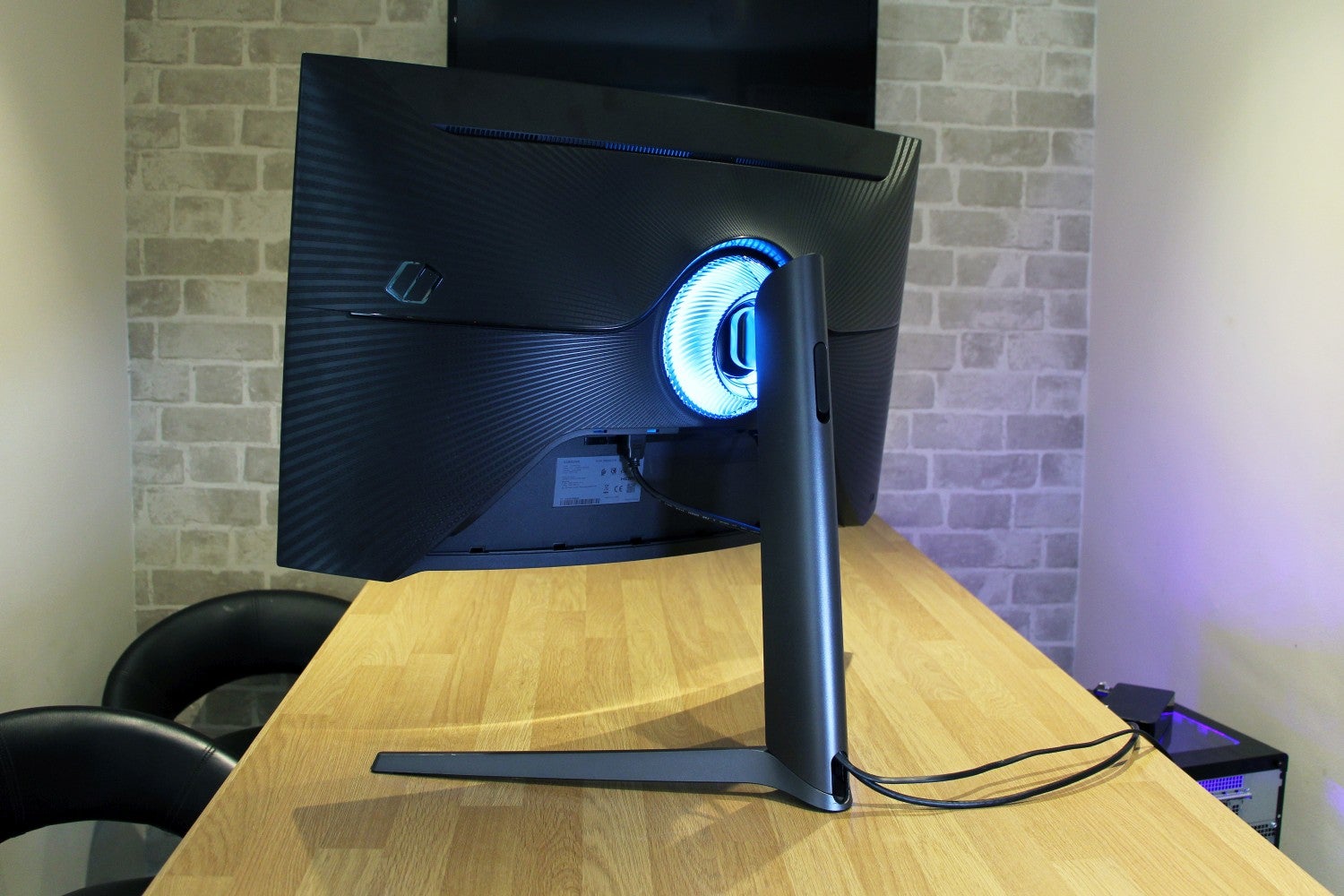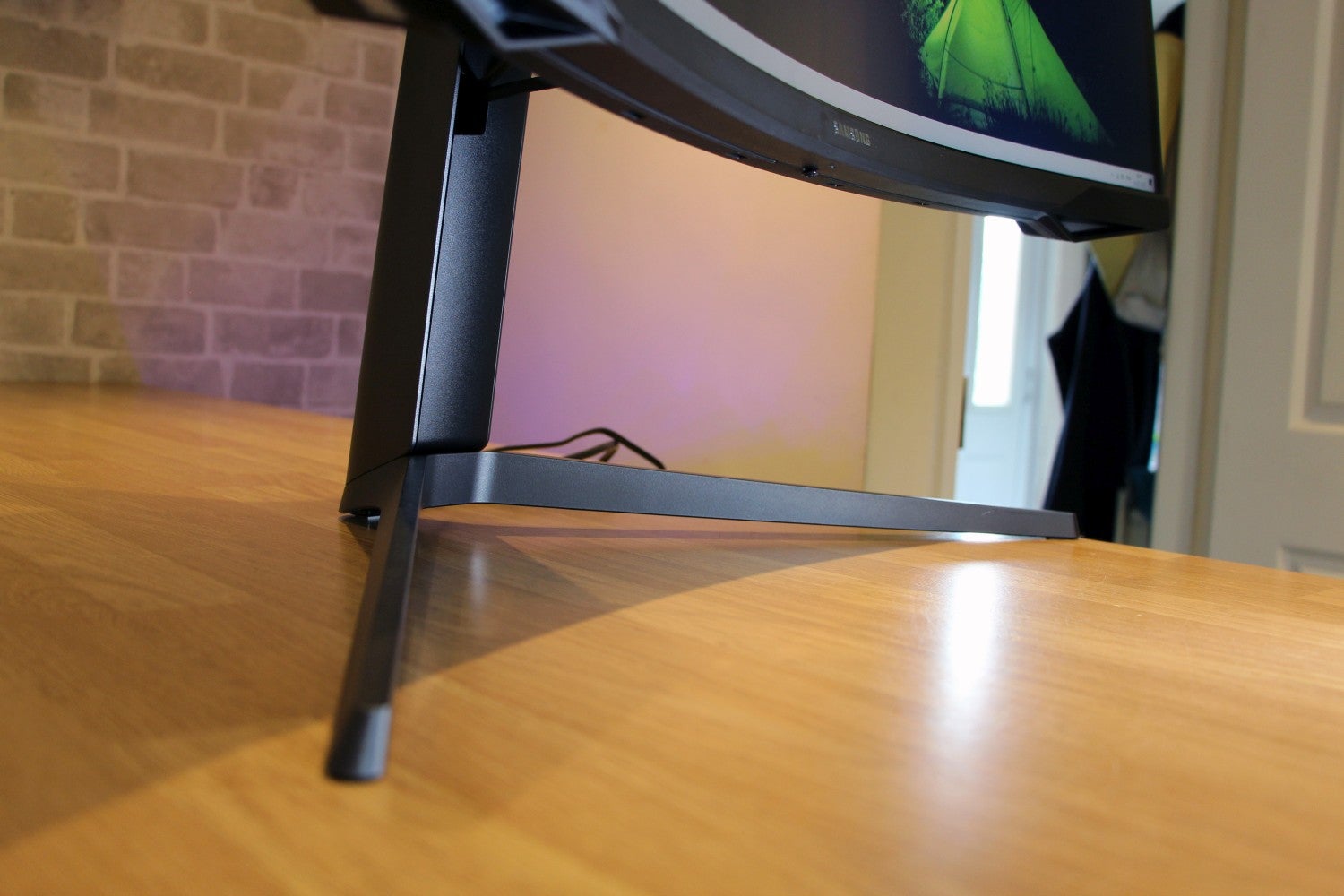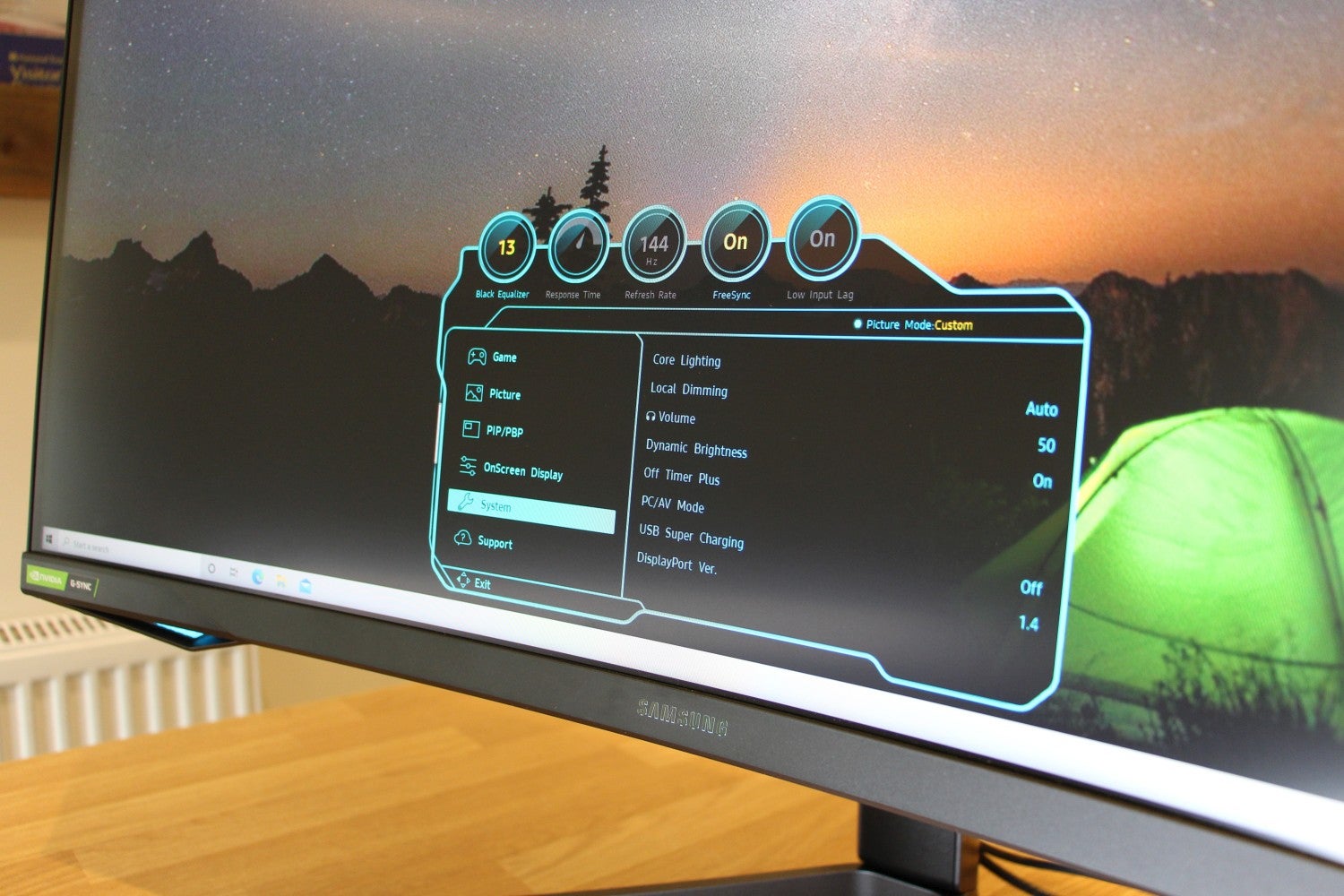Samsung Odyssey G7 Review
A bold, expensive and curvy gaming display – is it the best option for your PC?
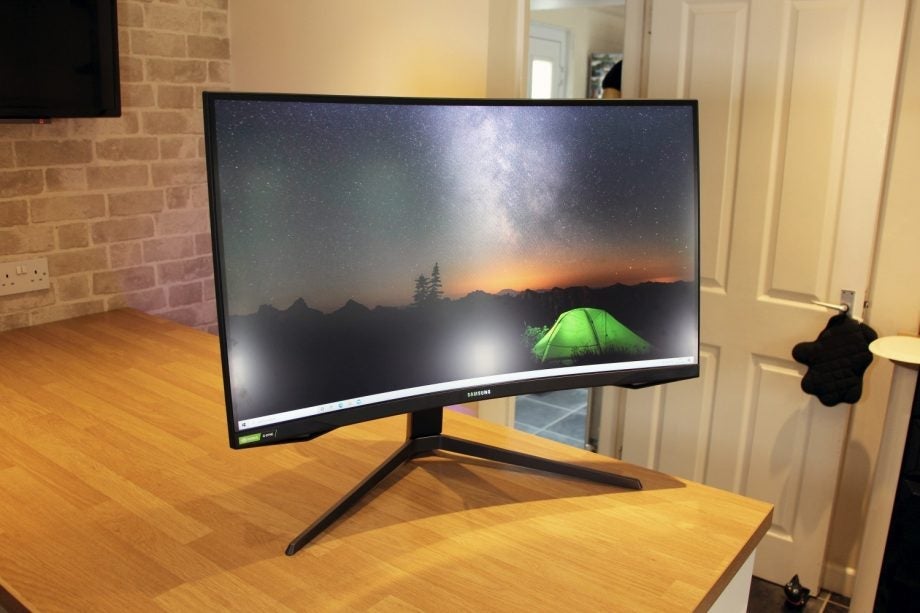

Verdict
There’s a lot to like here, including great 240Hz gameplay, excellent image quality and that immersive curve. It’s robust too, and the G7 isn’t bad when it comes to HDR. It only falters with some tiny movement issues and a lack of ports.
Pros
- Immersive curved design
- Great 240Hz AMD FreeSync
- Impressive image quality
- Loads of adjustment options
Cons
- Could do with some more ports
- Not the best HDR options
- Not cheap
Key Specifications
- Review Price: £630
- 32in diagonal, 2560 x 1440
- VA panel
- Refresh rate: 240Hz
- 1ms response time
- AMD FreeSync Premium Pro
- Nvidia G-Sync Compatible
- Weight: 8.2kg
The Samsung Odyssey G7 is one of the first screens to emerge from the firm’s revitalised gaming brand, and this £630 panel has a deeply impressive specification.
It’s got AMD FreeSync Premium Pro that runs at 240Hz, a 32in-diagonal screen with a 2560 x 1440 resolution and a curve – and, the curve uses an innovative 1000R radius.
Design and Features
The 1000R radius is tighter than the 1800R shape used most other curved displays, and it makes lots of sense – it’s more in tune with the shape of people’s eyes and is designed to look its best when you’re sat around a metre from the screen, which is normal for PC gamers.
At first, the tighter curve is disarming, but it works well; the corners are closer, viewing angles are better and gaming is more immersive.
The G7 is a 32in panel with a 2560 x 1440 resolution, which means it has a solid amount of on-screen real estate and a 92ppi density level. Games are reasonably crisp here, but 4K panels are sharper.
Samsung’s screen works with AMD FreeSync Premium Pro and Nvidia G-Sync at 240Hz, which means esports games and fast-paced single-player titles run smoothly at incredible frame rates, as long as you’ve got a suitable graphics card. As ever, the jump from 144Hz to 240Hz is not as drastic as the leap from 60Hz to 144Hz, but the move to 240Hz remains noticeable and advantageous for high-end competition.
Elsewhere, the G7 uses the mid-range DisplayHDR 600 protocol, and the underlying panel is a 10-bit VA display with a superb 1ms response time.
When it comes to the specification, there’s not much missing. It’s faster than the 165Hz Acer Predator XB273UGS and even further ahead of 4K panels when it comes to refresh rate.
The G7 has front-facing RGB LEDs, a stylish metal stand and more RGB LEDs around the rear. It has 120mm of height adjustment alongside tilt, swivel and pivot options, which is a superb slate of adjustability for a 32in curved screen – and build quality is excellent. The Samsung has two USB 3.0 ports alongside two DisplayPort connectors and an HDMI input.
There are some areas where the G7 isn’t so impressive. Those front-facing RGB LEDs are inconsistent, have no brightness adjustment and can only use a limited range of colours. The G7 has no USB Type-C or Thunderbolt and no speakers, while its headphone holder is too flimsy.
It’s a little irritating to build too, with lots of screws required. Happily, the on-screen display is better: the joystick is snappy, and the software is intuitive with key information handily displayed and a good range of options arranged sensibly.
Image Quality
Out of the box, the G7’s brightness and black point figures of 407 nits and 0.2 nits are impressive, resulting in a contrast ratio of 2035:1 which beats any IPS display and provides huge punch, vibrancy and nuance in any game.
The G7’s average Delta E of 2.68 is good enough for gaming, and its colour temperature of 6587K is excellent. The G7 is very uniform, and it rendered 99.6% and 90% of the sRGB and DCI-P3 colour gamuts – both figures mean that the G7 can operate effectively in those colour spaces. Happily, these levels of quality were all maintained when we reduced the G7’s brightness to a more conventional setting.
This screen even did a better job than expected in HDR mode. Its revised brightness and black points of 647 nits and 0.07 nits go beyond DisplayHDR 600, and they mean that you’ll get a decent boost in games. The G7 can’t compete with DisplayHDR 1000 screens, but it’s still a welcome addition.
When it comes to gaming, there are only minor problems including a tiny bit of high-speed ghosting and halo effects. These are minuscule issues that just won’t be noticeable to most gamers, though, and other screens suffer more severely.
Should you buy it?
The Samsung Odyssey G7 serves up superb contrast, great colours, decent HDR and butter-smooth 240Hz gameplay. That tight curve improves immersion, and the design is robust and versatile.
The G7 does suffer from some tiny movement issues that the most competitive gamers will notice, and the G7 could have better connectivity. There’s no denying the high price, either – you could save money if you don’t necessarily need a 240Hz display.
But if you do want a 21:9 display with top-notch speed, great quality and a bold curve, the G7 delivers in most departments. It’s not perfect, but it is very good.

